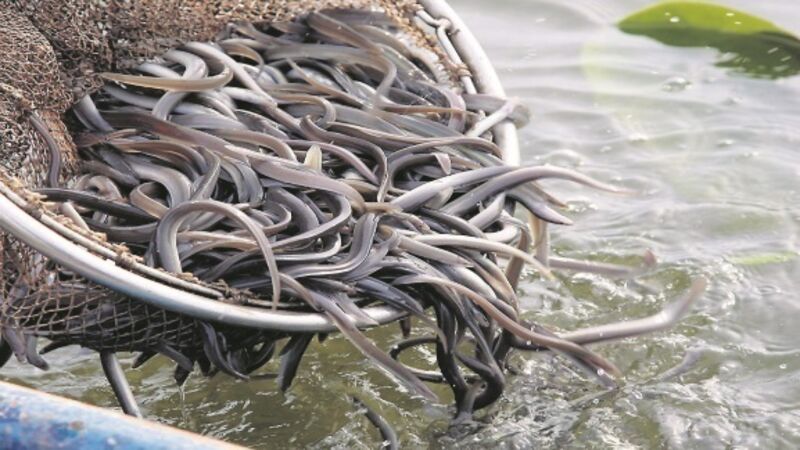Cutting-edge study to save eels

In the 1960s, our estuaries teemed with elvers, recently in from the sea. A decade later, their numbers began to fall. Since then, the eel population has decreased by 90% and the species is listed as “critically endangered” by the International Union for the Conservation of Nature. Scientists don’t know the cause of the problem; pollution, over-fishing, and changes in ocean currents brought on by rising sea temperatures, are suspects. One definite threat has been identified; eels are killed by the turbine blades of hydro-electric power stations. Researchers at Southampton University have been examining how eels try to cope with obstacles in rivers. Their results suggest that it might be possible to reduce the carnage from turbines.
Eels begin life in an area of the Atlantic, 3,000km long and a 1,000km wide, between Bermuda and Cuba. It’s called after the sagassum seaweed, great quantities of which are found there. Although it hasn’t been proved definitively, it’s believed that all European eels go to the Sargasso Sea to mate and spawn. It’s also their graveyard; once they have bred, the eels die. Their larvae, on hatching from the eggs, drift north-eastwards with the ocean currents for about a year. Arriving off the European coast, after a 5,000km journey, the little eels enter estuaries. There they become tiny versions of their parents and begin battling upstream, surmounting all obstacles; waterfalls, weirs and dams. The term “elver”, short for “eel fare”, refers to this rite of passage. Once at their destinations the eels, now turned brown, will remain in ponds, ditches, and streams for years or decades.














